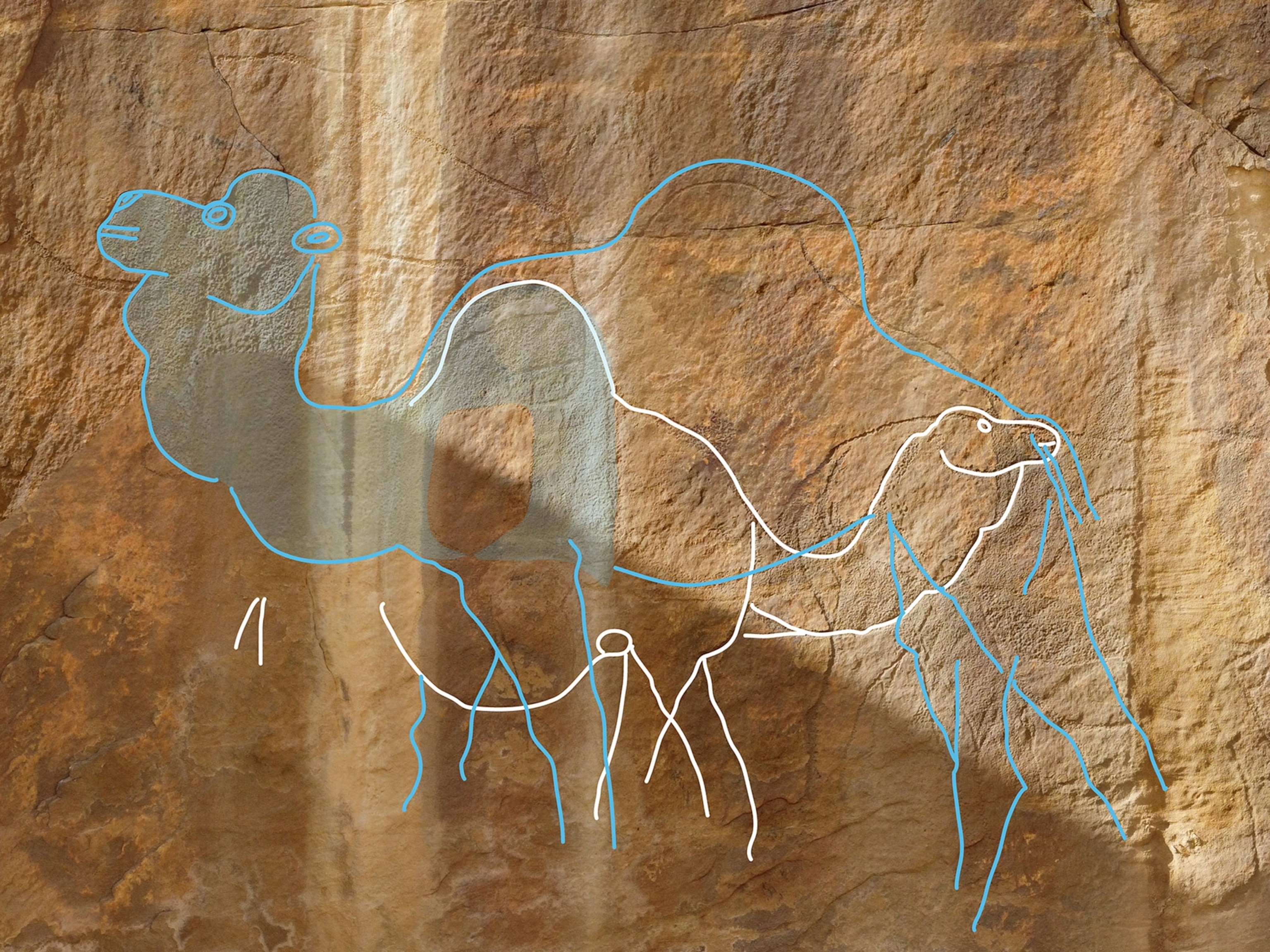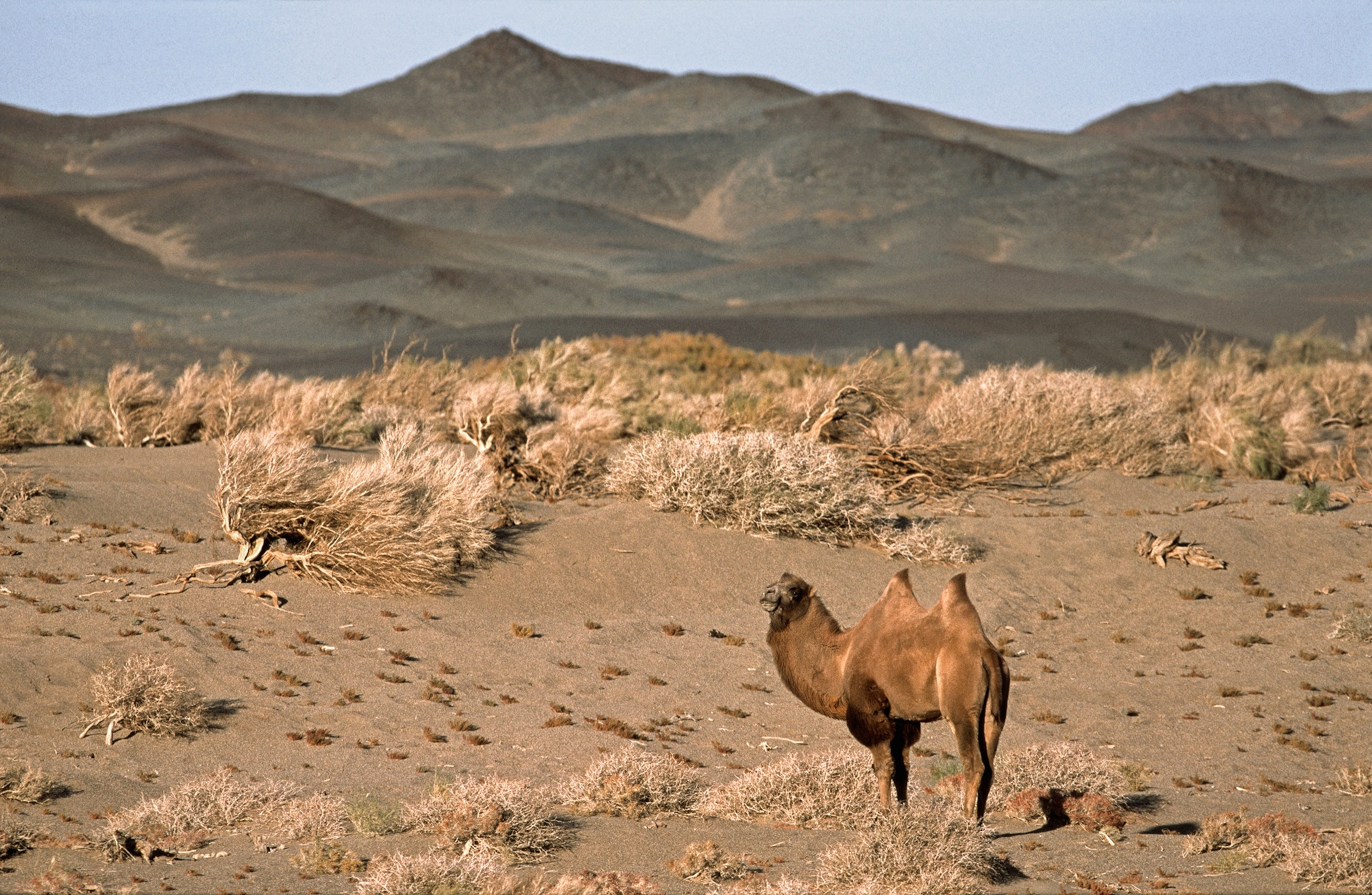
Can Angry Young Males Save a Critically Endangered Camel?
Chinese remote sensing expert leads the way in tracking wild camels in the Gobi Desert.
When a Chinese professor, a leader in the team committed to dispatching a Chinese probe to the moon, sends me three satellite maps, I pay serious attention.
As well as probing the surface of the moon, my friend Liu Shaochuang (“the professor,” as I call him), of the Remote Sensing Unit at the Chinese Academy of Sciences, in Beijing, is helping monitor the movements of wild, double-humped camels in the vastness of the Gobi Desert in Mongolia. The camels are wearing collars equipped with special receivers, and their locations are recorded by satellite every 24 hours.
The dead-of-winter months, roughly from November to February, are when the male camels start their seasonal three-month-long “rut.” As temperatures drop into the minus 30s, the camels’ adrenalin levels rise. This is when female tails go up as they come into season—a time when passions explode, and the tendons of a reluctant female can be severed by a rampant alpha male intent on instant submission.
If a group of young bull camels experiencing sexual urges for the first time is put into this volatile mix in the confines of a wild camel breeding center, the situation can be even more explosive. Fences and wooden buildings can be smashed and herdsmen put in fear of their lives.
The only solution to this potential camel bedlam is to remove the three- to six-year-old thrusting males from the fray.
A Special Kind of Camel
According to the latest estimates, as few as 450 wild camels roam the Mongolian Gobi, in a 55,000-square-mile (142,000 square kilometers) reserve called the Great Gobi Strictly Protected Area A. Another 600 or so are found across the Chinese border, in the desert surrounding Lop Nur.
Only in 2008 did the wonders of genetic testing, carried out by the Veterinary University in Vienna, prove what Mongolians and Uighurs in northwestern China had known for centuries: This camel is different. It is, in fact, an entirely new wild species that evolved more than 700,000 years ago—and not, as previously thought, a domesticated Silk Road Bactrian camel runaway gone feral.
The Mongolians even gave it a name—havtgai—meaning “flathead.” Wild camels have the incredible ability to drink salt water with a higher salt content than seawater. What’s more, the wild camels in China have survived no less than 43 atmospheric nuclear tests in the former Lop Nur test area, right on their doorstep.
But wild camels aren’t special enough to have overcome depredations by hunters, attacks by packs of hungry wolves, and destruction of their habitat by rapacious illegal gold miners.
Time isn’t on their side: Every year in China and Mongolia the threats increase, and natural replenishment of camel numbers is slow. Because wild camels have a 13-month gestation period, they can reproduce only every two years.
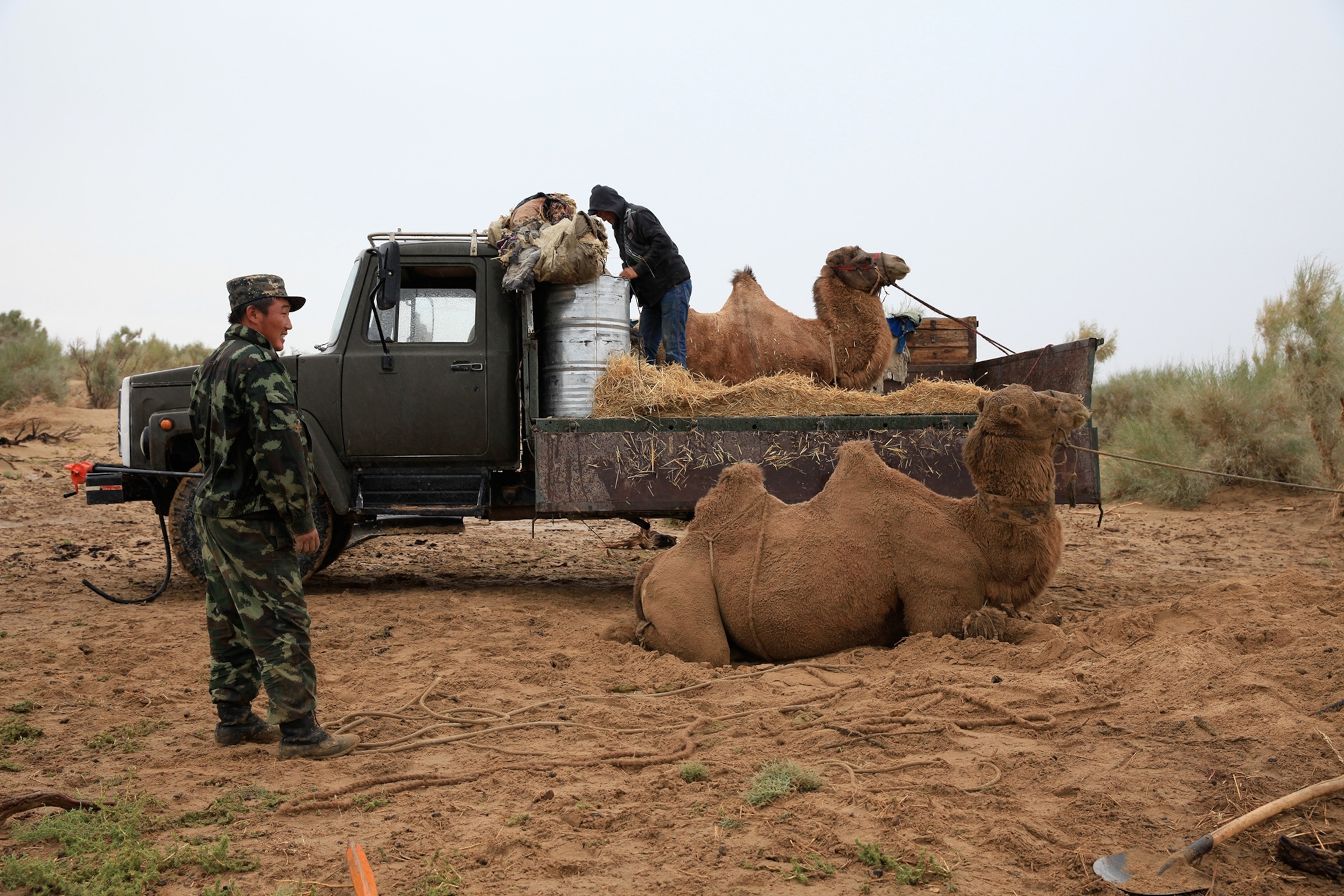
It was the increasingly precarious state of these creatures that spurred me to take steps to protect them. In 1997 I cofounded with Kathryn Rae the Wild Camel Protection Foundation, which helped to establish the Lop Nur Wild Camel National Nature Reserve in China.
Then, in 2004, I established the Hunter Hall Wild Camel Breeding Centre, near Bayan Tooroi, in southwestern Mongolia, on the fringe of the Gobi. Peter Hall, an Australian philanthropist, and the Mongolian Ministry for Nature, provided essential support. The center now holds 22 wild camels, up from the 12 we started out with.
Our goals are to safeguard the wild camel’s unique genetic makeup for future generations and to introduce fresh blood into the wild population by releasing camels we breed into their natural habitat. We aim to gradually boost the wild population in Mongolia to a sustainable number—ideally no fewer than a thousand.
The only solution to this potential camel bedlam is to remove the three- to six-year-old thrusting males from the fray.
In 2013 we released two young males into the desert, and six more during the 2015-16 winter months. Eventually we hope to release four camels a year, including females. But for now, we’re focused on reducing the threat of rutting young males in the breeding center.
Tragic Tale With a Happy Ending
That first release of the two males was to take place on September 25, 2013. But when I arrived at the protected area headquarters, at 9 p.m. the night before, I immediately sensed an all-pervading gloom. Gotov, the breeding center manager and director of the Great Gobi Strictly Protected Area A, had collapsed and died from a heart attack six hours earlier.
The staff lamented through the night, assuaging their grief with vodka. Next morning, seven mightily hung over rangers and our mercurial herdsman, TsogErdene, presented themselves for release duty.
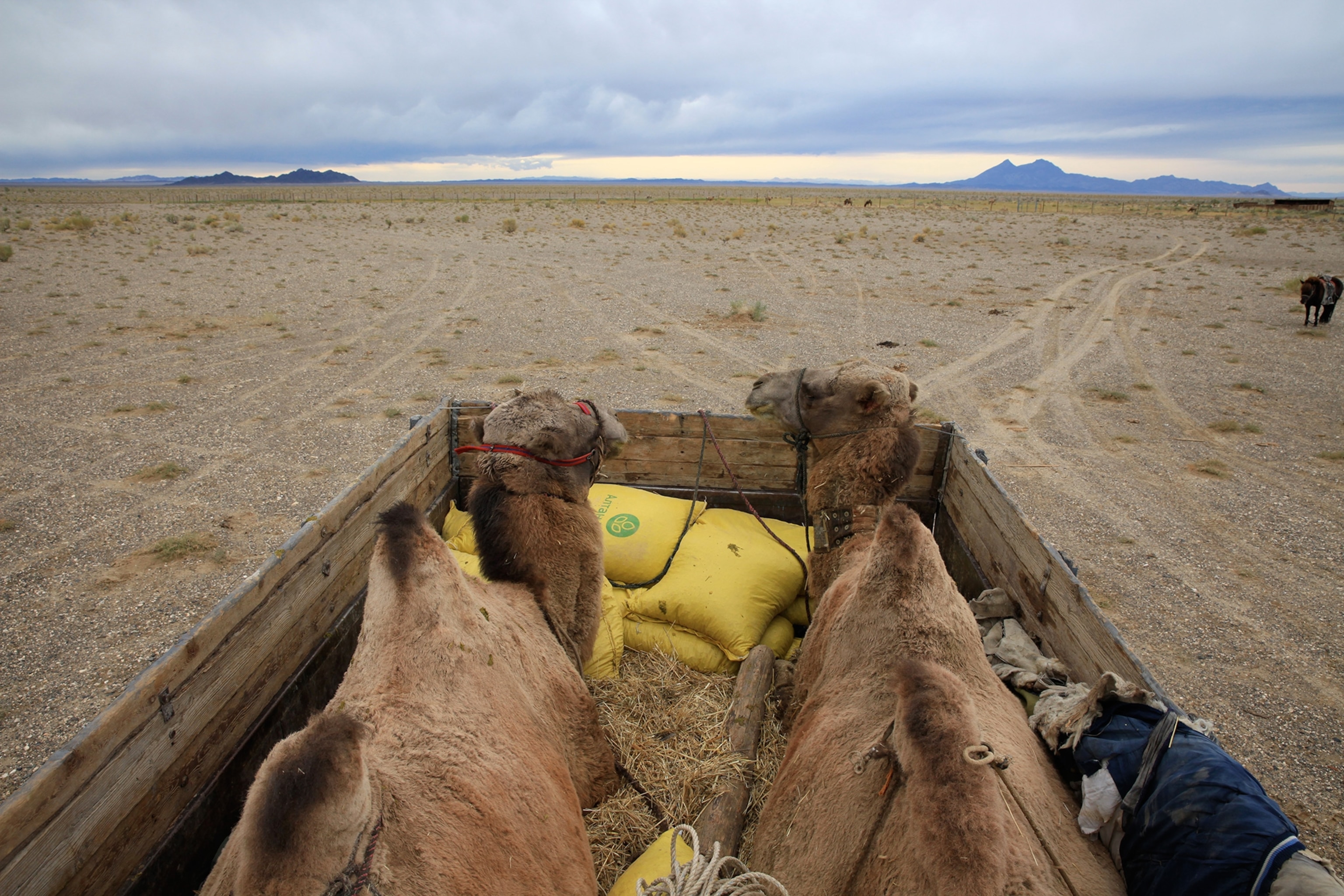
This required goading the two rambunctious camels into an antiquated side-loading truck. Five hours elapsed before we finally got them on board. With the camels trussed up like Christmas gifts, wearing their satellite tracking collars and settled between bales of hay, in fading light we set off on the 250-mile-journey into the desert.
We arrived at our destination, a large spring with ample vegetation, at 3 a.m. Leaving the camels in the truck, we snatched three hours’ sleep. At first light, we backed the truck up against a small sand dune for a level unloading platform and untied the camels’ ropes.
Naran leaped down and cantered away into the desert, but his compatriot, Joyon, stood up in a daze and promptly sat down again. We left him to make his own way out of the truck and returned to our camp for breakfast. When we came back, he’d disappeared.
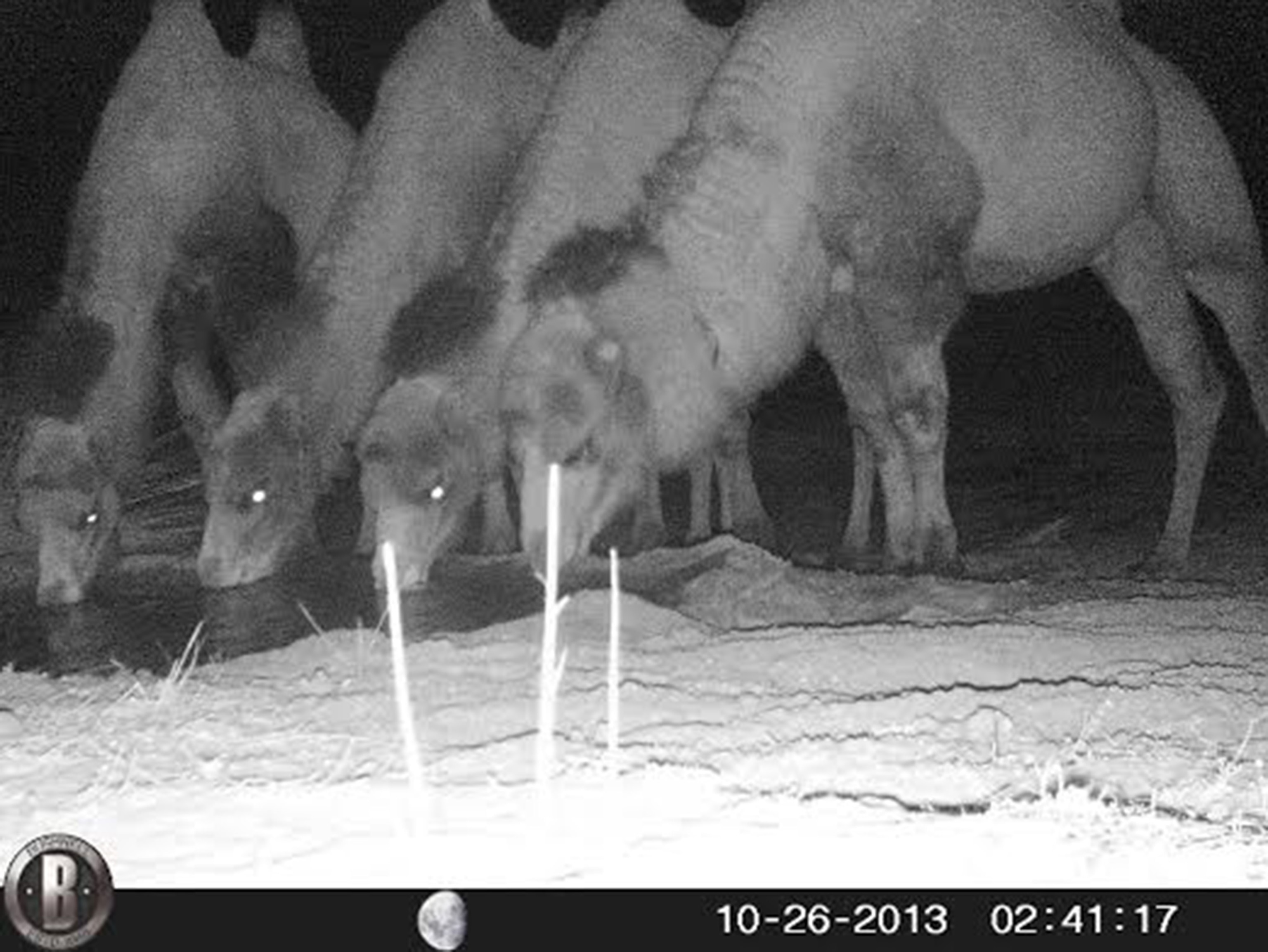
Back in England I received satellite downloads from the professor of the movements of the two camels. Their collars were working perfectly, and the maps showed that they’d immediately separated.
But a month later, Joyon’s collar stopped working. Dejection turned to elation when a camera trap placed by one of the Gobi A reserve rangers near the spring where the release had been made showed that Naran had attracted four females. All had their heads down and were drinking the fresh water.
In October 2015, we released six more young males in high style, with Britain’s ambassador to Mongolia a keen observer. Four were fitted with tracking collars, and satellite images showed that they, like the first two, separated immediately, each setting out on its individual track.
Can they too attract female camels in the Gobi? Will a hormonally charged bull, infuriated at their presence near his harem attempt to kill them? Will they, having been bred in captivity and therefore protected from natural dangers, be able to outwit voracious packs of wolves? Or will an illegal miner shoot them for food?
Liu Shaochuang’s latest satellite transmission, dated January 27, indicates that as of this writing the camels are doing just fine.
John Hare is the cofounder of the Wild Camel Protection Foundation, a UK registered charity Number 1068706, committed to save from extinction in the Gobi deserts of China and Mongolia the critically endangered wild camel. For more, see www.wildcamels.com and www.johnhare.org.uk





